 Fresh. Purchased at the field. Scrumptious.
Fresh. Purchased at the field. Scrumptious. With a penny, just so you can compare the size!
With a penny, just so you can compare the size!Your life is not about what people expect you to be. It's about following your heart to be what you want to be.
 Fresh. Purchased at the field. Scrumptious.
Fresh. Purchased at the field. Scrumptious. With a penny, just so you can compare the size!
With a penny, just so you can compare the size!







Fanny P. Joslin to Joseph Shoemaker on February 5, 1843 (1st Book pg 68)
Lysander Price Joslin to Lydia Robinson on August 23, 1843 (1st Book pg 76)
Emily Eliza Joslin to John Long on October 12, 1854 (Book 1 pg 187)
Edwin M. Joslin to Sarah Fellows on November 9, 1854 (Book 1 pg 182)
Joseph A. Joslin to Prudentia E Noble on June 2, 1861 (Book 2A pg 55)
Given the fact that James Joslin is the only "Joslin" household in Whitley County in 1840, it has been presumed that the individuals listed in the above marriage records are the children of James and Abigail Joslin. And, yes, I am quite aware that all of the "children" listed in a household are not necessarily the children of the head of household. That fact notwithstanding, and with additional research that has been done on each of them (sources available upon request), the household of James Joslin in the 1840 Whitley County census appears to be:
 On Friday, October 10th, the second reincarnation of the Henry M. Jackson Visitor Center was opened to the public and dedicated to the highly regarded and revered Washington State Senator Henry "Scoop" Jackson. Funding for the original saucer-shaped visitor center (check out the image to the right - a distinct likeness of the
On Friday, October 10th, the second reincarnation of the Henry M. Jackson Visitor Center was opened to the public and dedicated to the highly regarded and revered Washington State Senator Henry "Scoop" Jackson. Funding for the original saucer-shaped visitor center (check out the image to the right - a distinct likeness of the old JVC and a flying saucer taking off into space) was guaranteed much to his hard-work and dedication, so it was only fitting that the new visitor center also carry his name. Peter Jackson (the son of Henry Jackson, not the director) spoke at the ceremony, highlighting his father's love of wilderness, his desire to protect our country's most precious spaces, and to create enjoyable ways for people to learn from and enjoy these amazing places throughout our country and this state. The ceremony drew big-wigs from Washington (D.C. that is), including the Secretary of Interior Dirk Kempthorne, Representative Norm Dicks of
old JVC and a flying saucer taking off into space) was guaranteed much to his hard-work and dedication, so it was only fitting that the new visitor center also carry his name. Peter Jackson (the son of Henry Jackson, not the director) spoke at the ceremony, highlighting his father's love of wilderness, his desire to protect our country's most precious spaces, and to create enjoyable ways for people to learn from and enjoy these amazing places throughout our country and this state. The ceremony drew big-wigs from Washington (D.C. that is), including the Secretary of Interior Dirk Kempthorne, Representative Norm Dicks of  Washington's Sixth Congressional District, and the Chairman of the House Subcommittee on National Parks. Other distinguished guests included local Nisqually tribal elder Zelma McCloud, National Park Service Pacific West Regional Director Jon Jarvis, the aforementioned Peter Jackson of the Henry M. Jackson Foundation, Mount Rainier National Park Superintendent Dave Uberuaga, an elder representative from the Consolidated tribes and bands of the Yakama Nation; yours truly of course and another famed NPS persona, Mike (Gator) Gauthier, dressed to the nine's in his class "A" uniform, and several hundred other attendees at the ceremony.
Washington's Sixth Congressional District, and the Chairman of the House Subcommittee on National Parks. Other distinguished guests included local Nisqually tribal elder Zelma McCloud, National Park Service Pacific West Regional Director Jon Jarvis, the aforementioned Peter Jackson of the Henry M. Jackson Foundation, Mount Rainier National Park Superintendent Dave Uberuaga, an elder representative from the Consolidated tribes and bands of the Yakama Nation; yours truly of course and another famed NPS persona, Mike (Gator) Gauthier, dressed to the nine's in his class "A" uniform, and several hundred other attendees at the ceremony. The new 'green', energy efficient JVC II is architecturally designed to match its surroundings and the historical park style, referred to as 'Park Service Rustic'. The feeling of the building when you first enter is dictated mostly by the space, due to the height of the ceiling and massive windows that line the entirety of the wall, naturally lighting the surroundings. However, it could also have something to do with the weird climber want-to-be mannequin placed high atop the climbing display. A feeling of comfort is there too. Above you are post and beam rafters, held together with cast iron fixtures and signs made from a menagerie of dark metal and wood. Overall, I was impressed and I think the sentiment was shared by most.
The new 'green', energy efficient JVC II is architecturally designed to match its surroundings and the historical park style, referred to as 'Park Service Rustic'. The feeling of the building when you first enter is dictated mostly by the space, due to the height of the ceiling and massive windows that line the entirety of the wall, naturally lighting the surroundings. However, it could also have something to do with the weird climber want-to-be mannequin placed high atop the climbing display. A feeling of comfort is there too. Above you are post and beam rafters, held together with cast iron fixtures and signs made from a menagerie of dark metal and wood. Overall, I was impressed and I think the sentiment was shared by most.  winter/holiday break from December 20th through January 4th. And as has been the tradition up at Paradise for many years, Ranger-led snowshoe walks will begin at the new JVC (snow permitting) on December 20th. The two public walks (12:30, 2:30) are approximately 1.5 miles in duration and last less than two hours and are moderate to strenuous. The walks are an amazing opportunity to experience the Park and Mountain in the wintertime. The adjacent photo was taken this past winter as I was returning from one of my group snowshoe walks - a beautiful view of the old JVC at sunset.
winter/holiday break from December 20th through January 4th. And as has been the tradition up at Paradise for many years, Ranger-led snowshoe walks will begin at the new JVC (snow permitting) on December 20th. The two public walks (12:30, 2:30) are approximately 1.5 miles in duration and last less than two hours and are moderate to strenuous. The walks are an amazing opportunity to experience the Park and Mountain in the wintertime. The adjacent photo was taken this past winter as I was returning from one of my group snowshoe walks - a beautiful view of the old JVC at sunset.












| S | M | L | |
| Torso Length | 18 | 19 1/2 | 21 |


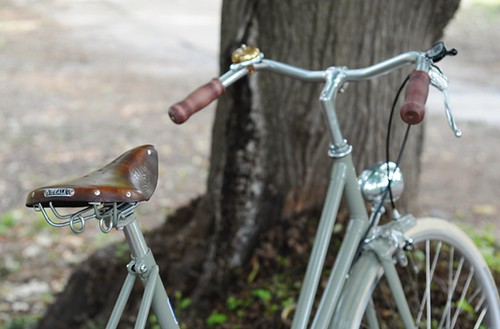 After what seems like ages, beloved Patrizia has finally returned to me. This is my personal Bella Ciao bicycle that has undergone many customisations and served as the "Superba" prototype guineapig. Having spent months in various states of disassembly, she then endured a long stay at the rack-maker's workshop - all without a word of complaint. And now she is back, her slender curves enticing me with promises of a romantic Indian summer.
After what seems like ages, beloved Patrizia has finally returned to me. This is my personal Bella Ciao bicycle that has undergone many customisations and served as the "Superba" prototype guineapig. Having spent months in various states of disassembly, she then endured a long stay at the rack-maker's workshop - all without a word of complaint. And now she is back, her slender curves enticing me with promises of a romantic Indian summer.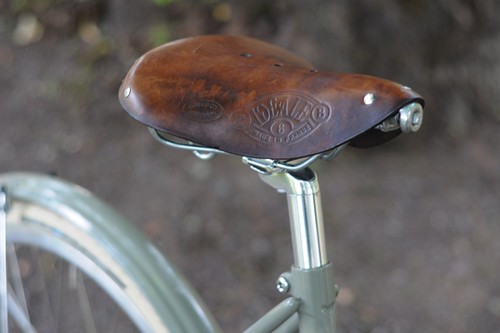 I am also reunited with the wonderful Ideale saddle I'd acquired in a trade some time ago. I had installed it on a vintage mixte I owned at the time, but after that bicycle was sold the saddle lived in my closet for over a year, waiting for the right moment to re-emerge. It looks and feels quite at home here.
I am also reunited with the wonderful Ideale saddle I'd acquired in a trade some time ago. I had installed it on a vintage mixte I owned at the time, but after that bicycle was sold the saddle lived in my closet for over a year, waiting for the right moment to re-emerge. It looks and feels quite at home here. Ideale was a French saddle manufacturer and the Model 6 is a wide, short-nosed women's saddle that was made some time in the '70s. Although some have drawn parallels between the vintage Ideale and contemporary Berthoud saddles, in my opinion they are nothing alike and Berthoud is not an Ideale remake.
Ideale was a French saddle manufacturer and the Model 6 is a wide, short-nosed women's saddle that was made some time in the '70s. Although some have drawn parallels between the vintage Ideale and contemporary Berthoud saddles, in my opinion they are nothing alike and Berthoud is not an Ideale remake. Finally, I am reunited with the wooden grips I began to experiment with a few months back. I've decided to keep them on this bike, and they have been surprisingly comfortable. I thought that I might get blisters on my hands, but it hasn't happened. I am also happy to report that they haven't cracked or distorted despite plenty of humidity and temperature changes over the summer. I am not going to finish them with any kind of sealant, because I'd like to see what happens to them in the winter. Vintage collectors who are experienced with wooden grips have told me that if the grips are made "in the right way" they should not need any sealant and will be fine as they are. We'll see. While I'd be reluctant to recommend these for mainstream use, personally I love them.
Finally, I am reunited with the wooden grips I began to experiment with a few months back. I've decided to keep them on this bike, and they have been surprisingly comfortable. I thought that I might get blisters on my hands, but it hasn't happened. I am also happy to report that they haven't cracked or distorted despite plenty of humidity and temperature changes over the summer. I am not going to finish them with any kind of sealant, because I'd like to see what happens to them in the winter. Vintage collectors who are experienced with wooden grips have told me that if the grips are made "in the right way" they should not need any sealant and will be fine as they are. We'll see. While I'd be reluctant to recommend these for mainstream use, personally I love them.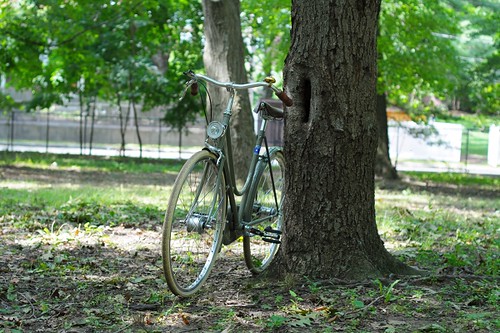 Riding this particular bicycle always makes me realise how weird my tastes are. Responses to it have included "Ew, that colour!", "How can you ride with those things on the handlebars?" and "Is that a woman's army bike??" - all of which I've found oddly gratifying. Looking with fondness at her wooden grips, pukey powdercoat, trigger shifter and mottled 40 year old saddle makes me want to put my arm around Patrizia: "Looks like it's just you and me, babe."
Riding this particular bicycle always makes me realise how weird my tastes are. Responses to it have included "Ew, that colour!", "How can you ride with those things on the handlebars?" and "Is that a woman's army bike??" - all of which I've found oddly gratifying. Looking with fondness at her wooden grips, pukey powdercoat, trigger shifter and mottled 40 year old saddle makes me want to put my arm around Patrizia: "Looks like it's just you and me, babe."

A wonderful, 101-foot waterfall in Devil's Postpile National Monument. The hike was interesting and the waterfall rewarding!

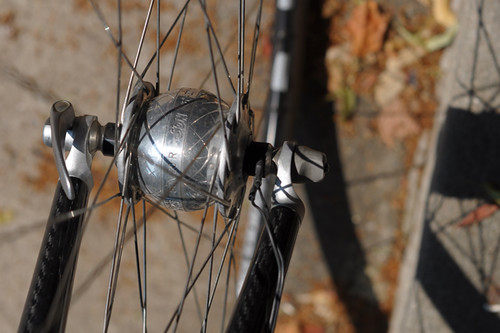
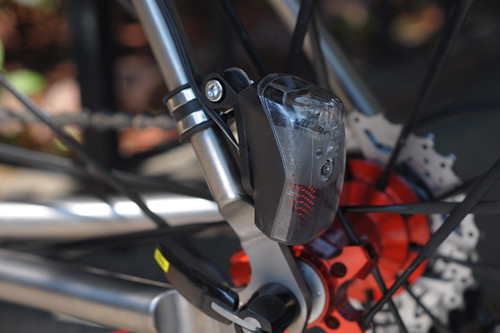
 Let's start with Mrs. Reeve shall we?
Let's start with Mrs. Reeve shall we? Can't get much steeper than that."Hung Like a Fruit Bat" 25 Coolum Cave
Can't get much steeper than that."Hung Like a Fruit Bat" 25 Coolum Cave


 Hey Dave, you got the time?
Hey Dave, you got the time?